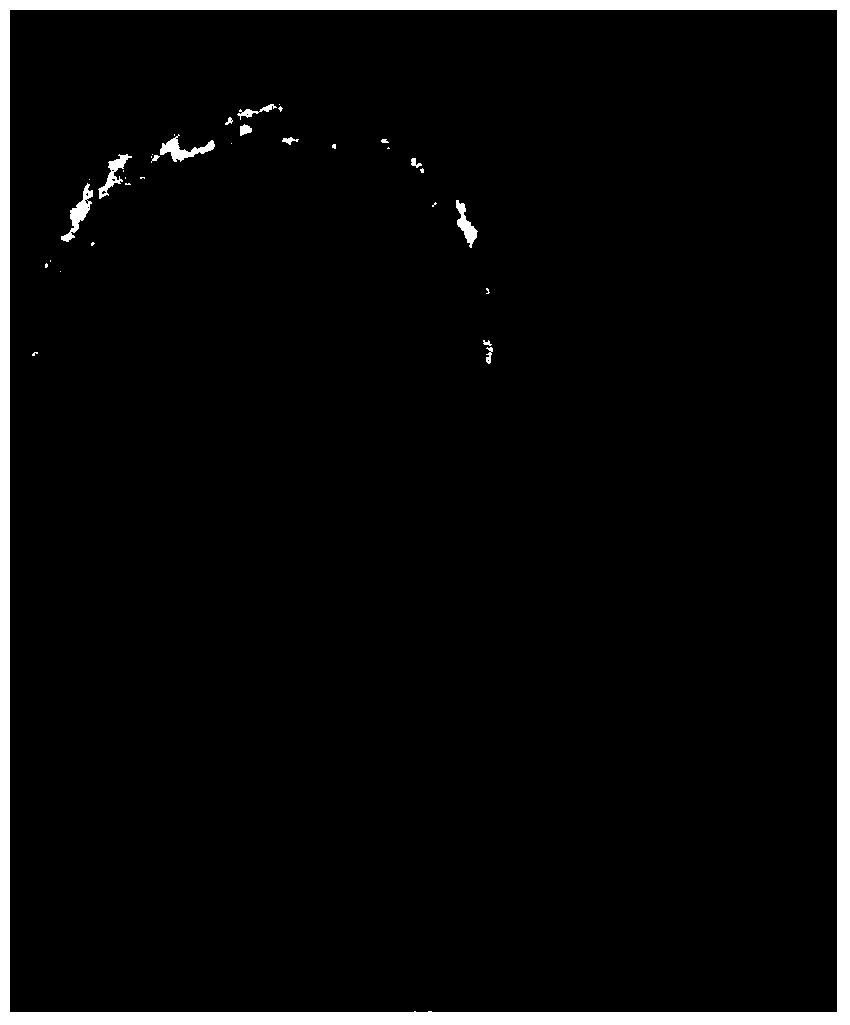Fluorescent magnetic nanoparticle for hypochlorous acid detection and synthetic method thereof
A technology of magnetic nanoparticles and synthesis methods, applied in the fields of nanomaterials and chemical sensors, can solve the problems of complex and cumbersome synthesis process of organic fluorescent probes, single detection means and functions, and achieve low cost, simple preparation process and high sensitivity. Effect
- Summary
- Abstract
- Description
- Claims
- Application Information
AI Technical Summary
Problems solved by technology
Method used
Image
Examples
Embodiment 1
[0060] The synthetic method of the fluorescent magnetic nanoparticle that is used for hypochlorous acid detection of the present invention comprises the following steps:
[0061] a.Fe 3 o 4 Synthesis:
[0062] Weigh a certain amount of FeCl 3 ·6H 2 O, anhydrous sodium acetate and ethylene glycol, wherein, FeCl 3 ·6H 2 The ratio of O to anhydrous sodium acetate and ethylene glycol is 1.0mmol: 10mmol: 9mL, and then the FeCl 3 ·6H 2 O and anhydrous sodium acetate were dissolved in ethylene glycol, mixed evenly, and then placed in a hydrothermal synthesis kettle at 200°C for 12 hours of reaction. After the reaction was completed, it was cooled to room temperature, and the black precipitate was separated by centrifugation, and then the After washing with absolute ethanol and drying under reduced pressure, Fe 3 o 4 ;
[0063] b.Fe 3 o 4 mSiO 2 nSiO 2 Synthesis:
[0064] 1) take by weighing a certain amount of Fe that step a obtains 3 o 4 , and then by dilute hydroch...
Embodiment 2
[0073] The synthetic method of the fluorescent magnetic nanoparticle that is used for hypochlorous acid detection of the present invention comprises the following steps:
[0074] a.Fe 3 o 4 Synthesis:
[0075] Weigh a certain amount of FeCl 3 ·6H 2 O, anhydrous sodium acetate and ethylene glycol, wherein, FeCl 3 ·6H 2 The ratio of O to anhydrous sodium acetate and ethylene glycol is 1.0mmol: 8mmol: 8mL, and then the FeCl 3 ·6H 2 O and anhydrous sodium acetate were dissolved in ethylene glycol, mixed evenly, and then placed in a hydrothermal synthesis kettle at 200°C for 8 hours of reaction. After the reaction was completed, it was cooled to room temperature, and the black precipitate was separated by centrifugation, and then the After washing with absolute ethanol and drying under reduced pressure, Fe 3 o 4 ;
[0076] b.Fe 3 o 4 mSiO 2 nSiO 2 Synthesis:
[0077] 1) take by weighing a certain amount of Fe that step a obtains 3 o 4 , and then by dilute hydrochlo...
Embodiment 3
[0086] The synthetic method of the fluorescent magnetic nanoparticle that is used for hypochlorous acid detection of the present invention comprises the following steps:
[0087] a.Fe 3 o 4 Synthesis:
[0088] Weigh a certain amount of FeCl 3 ·6H 2 O, anhydrous sodium acetate and ethylene glycol, wherein, FeCl 3 ·6H 2 The ratio of O to anhydrous sodium acetate and ethylene glycol is 1.0mmol: 9mmol: 8.5mL, and then the FeCl 3 ·6H 2 O and anhydrous sodium acetate were dissolved in ethylene glycol, mixed evenly, and placed in a hydrothermal synthesis kettle at 200°C to react for 4 hours. After the reaction was completed, it was cooled to room temperature, and the black precipitate was separated by centrifugation, and then subjected to After washing with absolute ethanol and drying under reduced pressure, Fe 3 o 4 ;
[0089] b.Fe 3 o 4 mSiO 2 nSiO 2Synthesis:
[0090] 1) take by weighing a certain amount of Fe that step a obtains 3 o 4 , and then by dilute hydroch...
PUM
 Login to View More
Login to View More Abstract
Description
Claims
Application Information
 Login to View More
Login to View More - R&D
- Intellectual Property
- Life Sciences
- Materials
- Tech Scout
- Unparalleled Data Quality
- Higher Quality Content
- 60% Fewer Hallucinations
Browse by: Latest US Patents, China's latest patents, Technical Efficacy Thesaurus, Application Domain, Technology Topic, Popular Technical Reports.
© 2025 PatSnap. All rights reserved.Legal|Privacy policy|Modern Slavery Act Transparency Statement|Sitemap|About US| Contact US: help@patsnap.com



